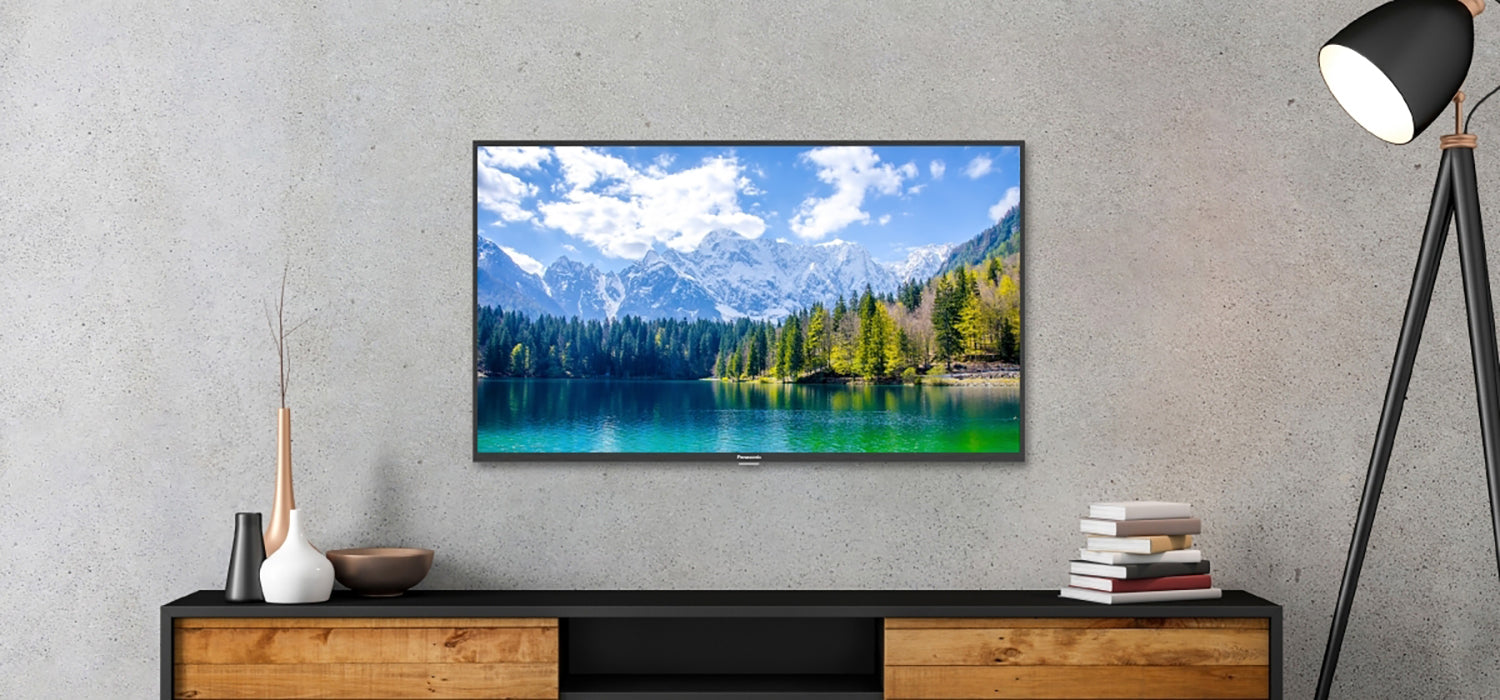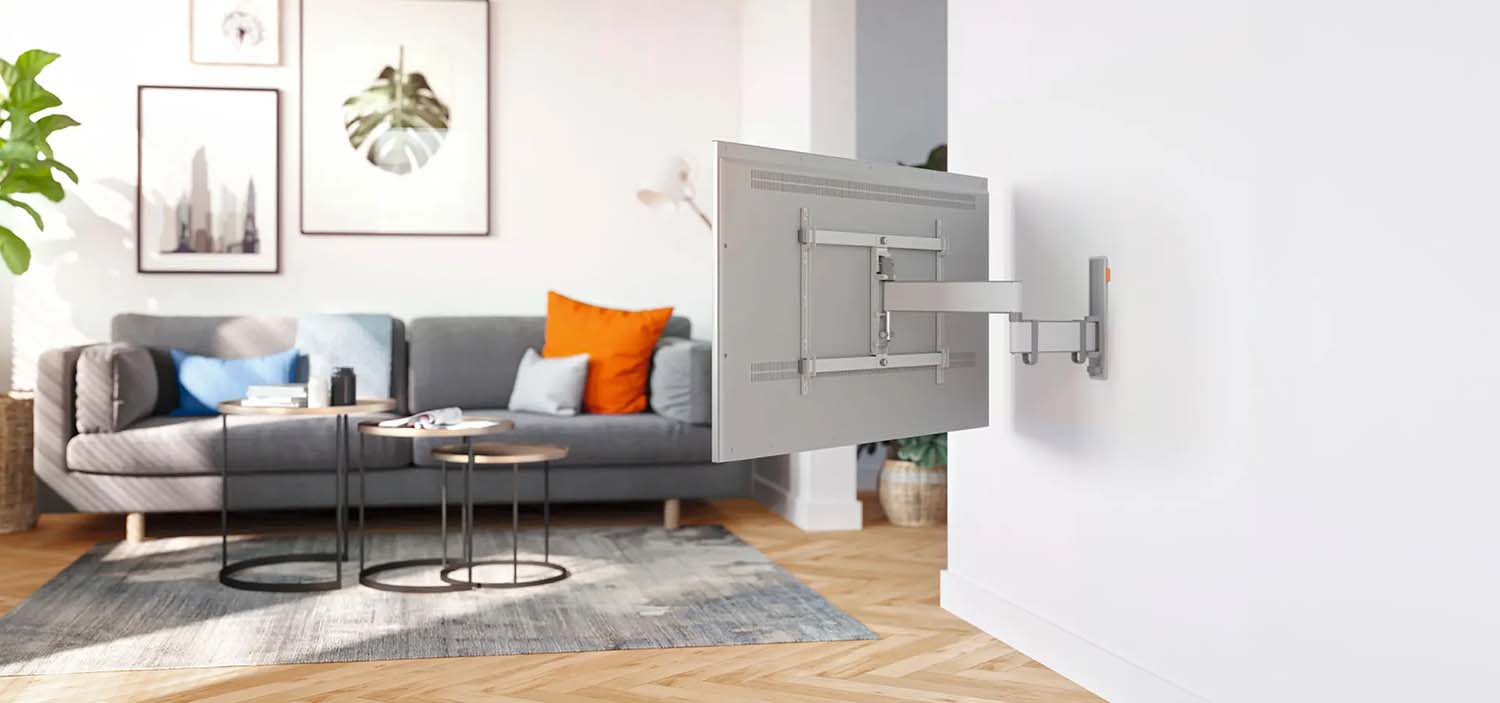Struggling to find the perfect TV for your home? It’s important to make sure that the television you choose fits your home and entertainment needs. From screen size and types to resolution, it can be hard to know where to start.
At Atlantic Electrics, we are here to help you choose the best television for your needs. In our handy TV guide, we will explain everything you need to know and help you step-by-step through the purchasing process to ensure you find what you are looking for.
Screen Types
There are a number of different models to choose from, with each one offering their own features and purposes. So, let’s explore some of the different screen types available.
Standard Screens-
Most televisions now include full HD (high definition) and LED (light-emitting diode) technology as a standard. These models will help enhance brightness, offer a crisp picture quality and create more realistic images for films, TV and gaming.
4K TVs-
4K screens have become more popular as they incorporate both LED and HD and offer a better viewing experience. With 8 million pixels, these models are 4 times greater than full HD, providing sharper colours, clarity and images.
8K TVs-
Some brands are now offering 8K TVs which boast 4 times the number of pixels of a 4K TV. These models provide you with unparalleled clarity and detail. However, they are usually the more expensive option.
It can take companies a while to create 8K content, but for now, some models use AI to upscale HD, SD and 4K content.

Screen Size
A television’s screen size is the distance measured from one corner of the screen to the opposite corner, excluding the surrounding bezel. The layout and available space you have in your home will change your viewing experience.
A larger TV screen will offer a more immersive experience and is suitable for a home cinema setup. However, a big screen can overcrowd smaller rooms and can cause uncomfortable viewing if you are too close to the screen. Smaller TVs are more convenient but will not have the immersive impact a larger screen has. Let’s take a look at the different screen sizes you can choose from.
- 19 - 32 inches- Ideal for kitchens, bedrooms and conservatories.
- 33 - 43 inches- A suitable size for watching everyday TV and movies, perfect for many living room designs.
- 44 - 50 inches- Bigger screens for larger rooms, great for sport, gaming and movie fans.
- 55+ inches- The biggest TVs for the ultimate viewing experience, perfect for larger spaces.

The most important thing to consider when choosing a screen is where you would like to place your TV in your home. This is because the closer you can comfortably sit to your television, the better your viewing experience will be as you can enjoy more detail in scenes and high definition content the way it was intended to be viewed. We have put together a recommended TV viewing distances guide to help you understand the space you require for each model.
1080p HDTV-
For a 1080p HDTV, you want to roughly be sat as equal to 2.5 times the size of your screen for the best viewing experience. This will provide the best balance of quality, comfort and immersion when viewing high-definition content.
|
Screen Size (Inches) |
Viewing Distance |
|
24” - 31” |
100cm - 1.1m |
|
32” - 39” |
1.2m - 1.4m |
|
40” - 45” |
1.5m - 1.6m |
|
46” - 55” |
1.7m - 2.1m |
|
56” - 65” |
2.1m - 2.5m |
4K Ultra HD TV-
The 4K Ultra HD TV offers increased pixel density which enables a crisp and detailed picture at closer distances. This means you can sit closer to the screen without reducing the quality.
|
Screen Size (Inches) |
Viewing Distance |
|
32” - 39” |
0.6m - 0.75m |
|
40” - 45” |
0.76m - 0.85m |
|
46” - 55” |
0.86m - 0.99m |
|
56” - 65” |
1m - 1.2m |
|
66” - 85” |
1.3m - 1.6m |
8K Ultra HD TV-
|
Screen Size (Inches) |
Viewing Distance |
|
32”- 39” |
0.3m - 0.37m |
|
40” - 45” |
0.38m - 0.43m |
|
46” - 55” |
0.44m - 0.51m |
|
56” - 65” |
0.53m - 0.62m |
|
66” - 85” |
0.63m - 0.81m |
Screen technology
As technology has developed over time, televisions have transformed with it, offering sharper picture quality, smarter features and a faster performance. We have created a list of the different screen technologies to consider to help you make the right purchase.
8K Ultra HD-
The state-of-the-art 8K televisions offer exciting new features and technology for an outstanding entertainment experience. The 4320p resolution ensures that there are over 33 million pixels at work which creates a stunning difference to the picture quality. 8K TVs provide exceptional clarity with breathtaking brightness levels.
4K Ultra HD-
4K Ultra HD is becoming the standard resolution for TVs to be manufactured with. Offering an impressive 2160p resolution, 4K televisions provide stunning detail. The increased pixel density enables more detail in content that outputs in 4K, with less-noticeable pixelation on images. This upscaling feature will also analyse and adjust any content being output below 4K revolutions to improve the contrast, clarity and overall picture quality. Each manufacturer uses different methods to achieve this technique, and the results may vary between brands, so it is important to find the brand that is right for you.
HD Ready & Full HD
HD Ready is a near-high definition format that outputs content at 720p resolution, providing an improved picture quality over standard resolution. Full HD outputs at a 1080p resolution and will display high-definition content in full. This outstanding technology is currently the industry standard resolution, with many broadcasts and peripherals such as Blu-Ray or game consoles providing content in this high-definition format. Full HD remains the most common technology for over-the-air programming and provides a reliable method of viewing.
LED
Generally, most televisions use a combination of LED (light emitting diodes) and a liquid crystal display for colour, clarity and contrast. The backlighting systems that LEDs offer are edge lit, direct or full array, with frame or local dimming systems to control luminance levels. LED technology also offers colour purifiers within the LCD panel, and HDR (high dynamic range) to deliver detail in its purest form.
OLED
The state-of-the-art OLED (organic light-emitting diode) TVs use self-emissive LEDs which creates its own source of light. The LEDs can be turned on and off as needed, producing black levels that are unattainable by competing screen technologies. OLED TVs are more advanced than LED screens however, they tend to be the more expensive option. Generally, these TVs are mostly manufactured by the brand LG.
Mini LED
Mini LED TVs are packed with lots of mini, hyper-focused LEDs that are engineered to be more compact than standard LEDs. This enables the TV to easily adjust the image to make different areas of the picture brighter or dimmer. This means you won’t have to worry about blurry bits of light seeping through the screen, and you can enjoy intense blacks and more realistic colours.
The main difference between Mini LED and OLED/QLED is the LED backlight.

Smart TVs
Generally, most brands now offer smart TVs which enables you to easily stream online content and catch up on your favourite shows. These models are easy to set-up and connect to your broadband.
The frame TV
Frame TVs feature a beautiful bezel that mimics the look of a true picture frame. So, when your TV is turned off, you can smoothly blend your screen into your home décor by choosing one of the many unique designs displayed on the screen.
Hello, Alexa
Control your TV with just your voice with built-in Alexa. Simply say “Alexa” and you can activate a range of exciting content. Finding your favourite TV show or film has never been easier!

Google TV
A Google TV is more than just a TV. Google televisions bring together and organise shows, films and more from across your apps and subscriptions into one place. You can ask Google to find a specific title, search by genre or even find personalised recommendations by asking “what should I watch?”. You can also add to your Watchlist from your phone, so your recommendations are always up to date. Google televisions can provide you with a wide range of information from the weather to the sports scores so you can find whatever you need effortlessly.
By connecting your compatible smart home devices to your TV, you can create the perfect cinema experience. You can control the lighting in your home by asking your device to “dim the lights” to turn your home into a theatre.
With Google TVs, you can create Kids Profiles which will help you to guide your children to age-appropriate content in a space that is their own. You can set kid-friendly filters for apps, movies and shows, and even limit how long they can watch content for.

Sound quality
Sound processing has become more precise than ever. With a variety of exciting audio features, you can now fully immerse yourself in your favourite content. It can be a difficult decision to make, but with our wide range of products, we can help you find the right sound system for your TV.
The most direct upgrade for your television is a good quality sound bar. By positioning the compact sound bar below your TV, it can produce room-filling sound with more precision, tone and clarity than TV speakers. If you are looking for more convincing bass tones, you can pair a sound bar with a subwoofer for an even more immersive experience.

A home cinema system requires multiple speakers and a subwoofer to be placed in one large room. These systems will provide exceptional power and impressive sound for a cinematic, thrilling experience. The most important thing to remember with a home cinema system is that it requires plenty of space and installation. Generally, the speakers are typically placed around the room to provide a true surround sound experience.

TV wall brackets, units and stands
The positioning of your TV is key to enhancing your viewing experience, and with the right setup, you can turn your TV area into a design statement. Whether you are looking to mount your TV on the wall or display on a stylish TV stand, we’ve got all the tips you need to find the perfect setup. Let’s break down what works best for your room and routine.
There are four distinct types of TV wall brackets to choose from, each with specific weight limits. To ensure safe installation, be sure to check that your chosen bracket can support your TV’s weight.
· Flat-to-wall- These models sit flush to your wall, offering a sleek finish.
· Tilting- Features a small extendable arm that elongates horizontally.
· Tilt and swivel- They offer both horizontal and vertical adjustment for optimal viewing flexibility.
· Multi-positional- The most flexible TV bracket available: enabling flexible movement for the best viewing angle.

TV units and stands-
It is important to consider the height of the TV stand you require as it will determine the viewing level of your screen. For the width of the stand, be sure to check whether your TV has feet at the centre or edges. Ideally, your stand should be at least 3 inches wider than the TV, but not so wide that your TV looks undersized. Make sure you also measure the depth of the stand to ensure it can accommodate for the TV’s feet. We recommend choosing a TV unit that is easy to move and offers flexible storage solutions, particularly if you have lots of DVDs, consoles or cables to keep everything organized.

Useful tips to consider
There is a wide variety of trusted brands to choose from when selecting a television. You can pick your favourite or find the brand that offers the specific features, size, and colour you are looking for. Take some time to research and discover the brand that is right for you.
Freeview boxes and recorders-
Generally, most models feature built-in Freeview Play so you can enjoy endless entertainment. However, if your TV doesn’t offer Freeview Play, you can easily add the same functionality to any setup with a simple set-top box. A Freeview Box offers you a world of free-to-air entertainment, enabling you to catch up on missed shows and record your favourites.
FAQs
We have listed some common questions we often get asked when buying a television below.
1. What is the difference between OLED and QLED?
OLED TVs do not need the backlight of an LED as each pixel can produce its own light. QLED technology is similar to this however, it also uses “quantum dots” across the screen which dramatically improves the image from every angle. Both technologies will provide you with impactful contrasts of colour and breathtaking detail for a stunning picture.
2. How do you mount a TV on a wall?
To mount your TV, you will need to drill into the surface of the wall to fix the necessary brackets. If you are comfortable using a drill, you can do this yourself. Alternatively, you can opt for a professional for assistance as they can also help you hide any wires inside the wall and replaster the surface for a clean, seamless finish.

The reputation of the brand, place of manufacture and quality of the model will all affect the price. At Atlantic Electrics, we will help you to choose a reliable model that provides you with the best results. We are happy to help you with anything you need. So, if you have any questions, simply get in touch with our team.
Telephone: 020 8208 6999
Email: web@atlanticelectrics.com
Our store: 970 North Circular Road London, NW2 7JR





